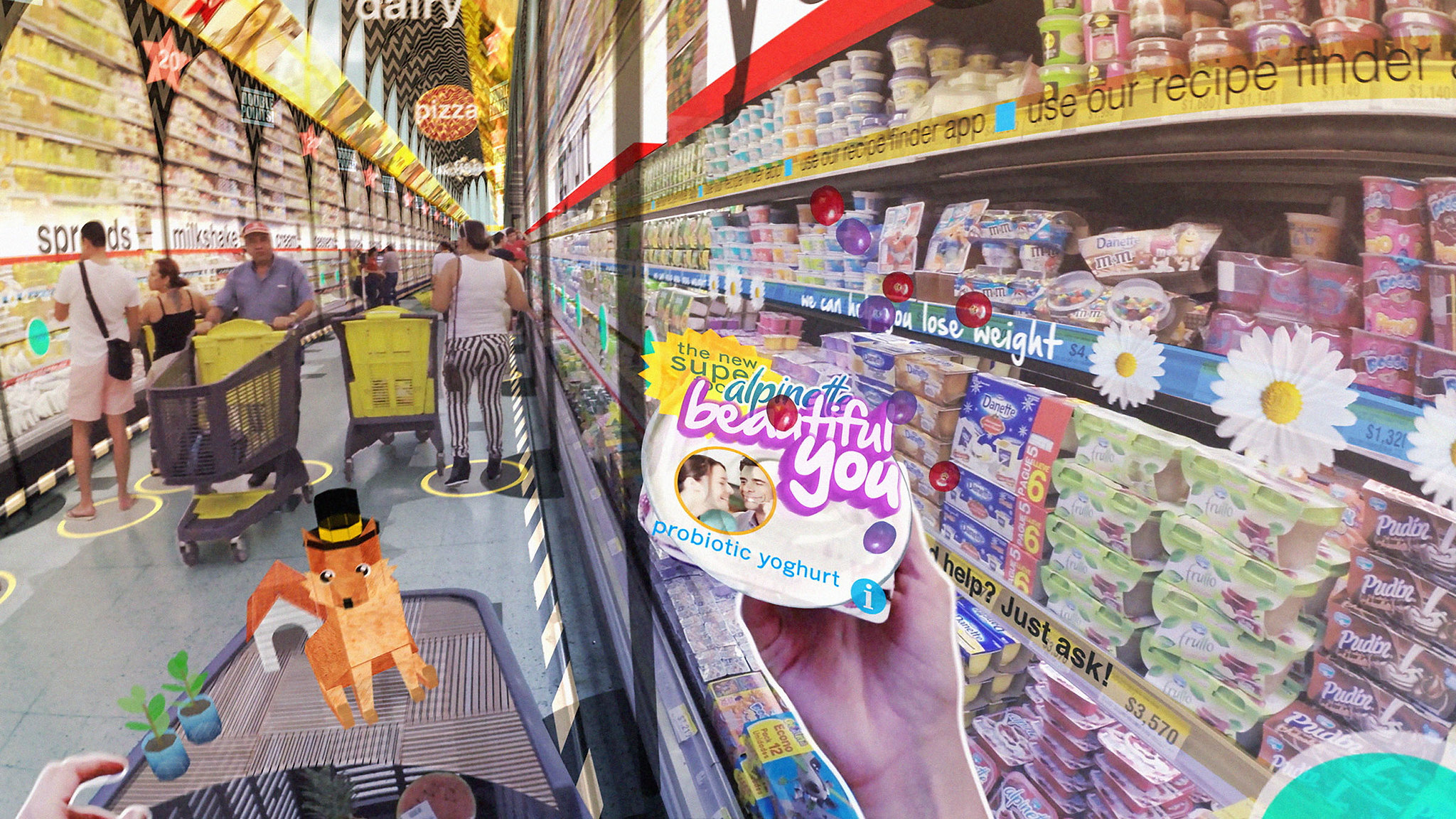Immersive and Oceanic

[Image: Undersea augmented reality headgear; courtesy of the U.S. Navy].
By now you’ve no doubt seen Hyper-Reality, the new short film produced by visualization wunderkind Keiichi Matsuda, whose early video experiments, produced while still a student at the Bartlett School of Architecture, I posted about here a long while back.
As you can see in the embedded video, above, Matsuda’s film is a POV exploration of information overload, identity gamification, and the mass burial of public space beneath impenetrable curtains of privately relevant, interactive marketing data, all cranked up to the level of cacophony; when it all shuts off at one point, leaving viewers stranded in a nearly silent, everyday supermarket, the effect is almost therapeutic, an intensely relieving escape back to cognition free from popup ads.

[Image: From Hyper-Reality by Keiichi Matsuda].
I thought of Matsuda’s film, however, in the context of the recent news that so-called heads-up displays, or HUDs, are coming to an underwater experience near you: the U.S. Navy has developed an augmented reality helmet for undersea missions.
This unique system enables divers to have real-time visual display of everything from sector sonar (real-time topside view of the diver’s location and dive site), text messages, diagrams, photographs and even augmented reality videos. Having real-time operational data enables them to be more effective and safe in their missions—providing expanded situational awareness and increased accuracy in navigating to a target such as a ship, downed aircraft, or other objects of interest.Wandering among enemy seamounts, swimming through immersive 3-dimensional visualizations of currents and tides, watching instructional videos for how to infiltrate an adversary’s port defenses, the U.S. Navy attack crews of the near-future will be like characters in an aquatic Hyper-Reality, negotiating drop-down menus and the threat of moray eels simultaneously.

[Image: From Hyper-Reality by Keiichi Matsuda].
This raises the question of how future landscape architects, given undersea terrains as a possible target of design, might use augmented reality on the seabed.
Recall the preservation program underway today in the Baltic Sea, whereby historically valuable shipwrecks are being given interpretive signage to remind people—that is, possible looters—that what they are seeing down there is not mere debris. They are, in effect, swimming amidst an open-water museum, a gallery of the lost and sunken.
So here’s to someone visualizing the augmented reality underwater shipwreck museum of tomorrow, narratives of immersive data gone oceanic.





Comments are moderated.
If it's not spam, it will appear here shortly!
Post a Comment